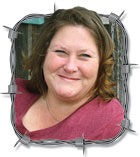Folks always called that week or so in February when it warmed up enough to get some buds out and the jonquils up as 'Oat planting time'. We sure had a spell of that this year. Experts say spring travels north at 15 miles a day. I was recently in a meeting in New Orleans and driving back I verified that information.
While I was on oat planting I recalled an incident and some wonder remedy that is no longer available to horse owners. In the spring of 1961 I used our team of mules and a sulky disc to work up five acres on that ground beside I-540 now north of the Bobby Hopper tunnel. My partner and I hand sowed oats and then we disced them in.
I had no idea how poor that ground was from over-grazing, erosion and baking in the sun. All three are factors in the depletion of the farm land in the Ozarks. The sun is a big one as it burns up the organic matter when the soil is left exposed. The yellow-stemmed oats came up in place and were bumble bee height when a few finally went to seed. I recalled Johnny Cash's song, “Land was so poor you had to sit on a sack of fertilizer to raise an umbrella.”
In the spring of 1962 we disced up about ten acres, used 300 pounds of ammonia nitrate, and 60 pounds of actual phosphorous per acre and despite a shortage of rain grew a tall crop of verdant green oats.
We had a hay crop and several folks came down to look at the standing crop and brag on it. There also was an old apple tree that received the benefits of the added nutrients and must have made a pickup truck load of big apples that year too.
When the time came to mow hay we repaired our ancient Case horse-drawn machine and found one of our mules was lame. So we took a stout saddle mare and hooked her in with Jim and mowed down the hay. She was pretty spooky (never been in harness before) but one thing she learned quick, she couldn’t haul Jim, the other mule, the mowing machine and me off in a wild stampede.
It was late that night we woke up and that gray mare was pounding her hooves on the back porch. We discovered she was in a cold sweat and groaning in pain. I knew she was having stomach trouble and didn’t know what to do for her but walk her. Old stories talked about a horse with a belly ache laying down rolling and twisting a gut. In desperation we gave her all the Tums we had and the rest of the pink medicine in a bottle — no help.
We spent all night leading her around. At dawn my partner went to get Lawrence Lyons, a local man we considered the best home vet in the country. Lawrence came over and agreed she was collicking, got out a small bottle, put some drops of it on a table spoon, then put it on her tongue. Then he said, “Let’s go have some coffee.”
He had to reassure me to leave her, we’d been up all night walking her. We drank the coffee and then went outside. She was grazing and fine. She never showed any symptoms again. Lawrence said she probably ate too many oat heads while we were mowing them, and that gave her the colic.
The product was Dr. Bell’s Medical Wonder. It was not legal back then in the U.S. My partner Monty Smith and I had a hunter friend going to Canada buy some and bring it home for us. It saved many horses and cured them without any aftereffects. Years later I lost a great horse to colic because I couldn’t find any. It had some drugs like belladonna in it that were not for public use, but every time I think about oats — I recall the time Lawrence cured that blue mare of the colic.
Western novelist Dusty Richards and his wife Pat live on Beaver Lake in northwest Arkansas. For more information about his books you can email Dusty by visiting www.ozarksfn.com and clicking on 'Contact Us' or call 1-866-532-1960.






